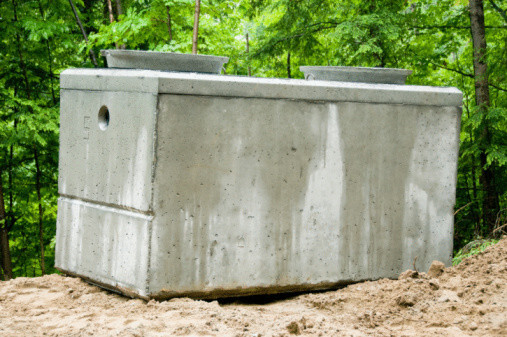A Leaky Septic Tank Is A Lousy One And Needs Attention!

Unfortunately, there are no glass-housed septic tanks which would allow us to see inside to be sure there are no leaks and everything is always functioning properly. That would be a nice feature, especially in the case of those who may be purchasing a home. I wonder how many home buyers only find out about those things after the purchase has been made. A good thought to keep in mind if you or someone you know is in the home buying process. Always ask for a septic system inspection before you buy!
How Do I Know If My Septic Tank Is Leaking and if I Need a Septic System Inspection?
This can be tricky! There is no easy answer, but here are a few things to keep in mind if you suspect that may be the case.
Unoccupied Homes
There is an outlet pipe in the tank located about 8” – 12” from the top that should be airtight. So even if a home has not been occupied for a few years, there should still be wastewater inside. A leak, of course, would cause the levels to drop which could produce solidified scum and sludge that collect low in the septic tank, making septic cleaning extra difficult and more costly. A leak can be verified by filling the tank to its normal liquid level, waiting a day or two without running any water inside the house, then re-checking for a level drop.
Occupied Homes
If, however, the home is occupied and the tank is being used, because of the constant influx of water, the liquid level may appear normal upon inspection. This is where it gets tricky. When the tank leaks, it may saturate the ground around it, causing the water to flow back into the tank when the liquid is pumped down. The level of water inside the tank may look normal, yet in reality it is only a false reading, and contaminants are oozing out around the tank. If a house is occupied, however, and the liquid level is low, that is a pretty good indicator that the tank is leaking.
Obvious Signs
Since most tanks have a top and bottom section, where these two sections meet is one of the first places to check for leaks as this is where they will frequently occur.
Oftentimes there will be no odors or outward visible signs of leakage. If, however, you do notice such changes like extremely vibrant patches of green turf grass or areas where vegetation seems to be growing at a much faster rate, that is a pretty clear indicator of a leak – but a bit too late. Most people catching a problem at this stage have waited too long already and may face costly bills for repairs to their system.
Dangers of a Leaking Septic Tank
A leaking septic tank is dangerous to the environment and to your family. Even if a homeowner is not experiencing a backup in the house or moisture over the yard, that is no guarantee there is not a leak.
Sealing a leaking tank may fix the problem for a short time, but is not a long-term solution. Once a tank begins to leak, a replacement is usually recommended. Depending on the age of the system and local regulations, replacing a septic tank may require replacing the entire system. Sometimes this cannot be avoided. But with routine septic system inspections, maintenance and repairs, you could save yourself thousands of dollars.
Routine Maintenance Is a Must!
The septic management plans we have developed are designed to maintain your system in a manner that will extend the useful life of your system as well as protect the health and safety of your family, neighbors, and the environment.
If your system is not functioning as it was meant to when it was installed, we are qualified to renovate your system so that it can function properly. We can meet all of your septic tank cleaning and sewer and drain cleaning needs along with septic repairs and many other services.
